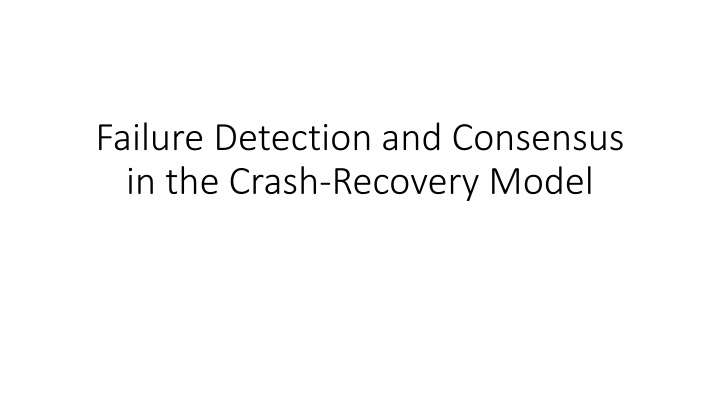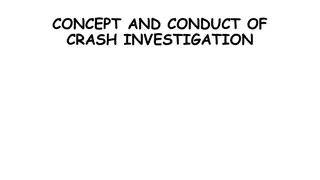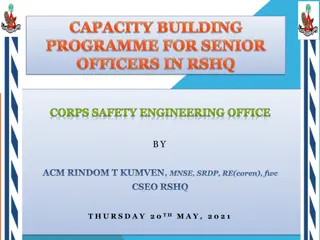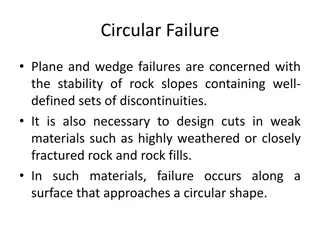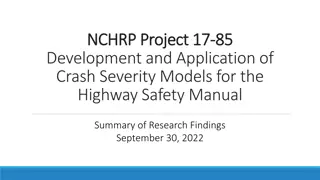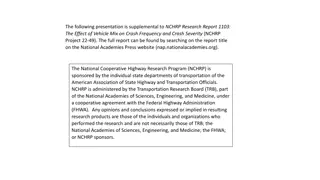Failure Detection and Consensus in the Crash-Recovery Model
In the Crash-Recovery Model, nodes may crash infinitely, detectors may make mistakes, and stable storage plays a key role. Consensus resolution in the presence of unstable and bad nodes is discussed, highlighting scenarios where stable storage is essential. The results shed light on the complexities of achieving consensus in distributed systems.
Download Presentation

Please find below an Image/Link to download the presentation.
The content on the website is provided AS IS for your information and personal use only. It may not be sold, licensed, or shared on other websites without obtaining consent from the author.If you encounter any issues during the download, it is possible that the publisher has removed the file from their server.
You are allowed to download the files provided on this website for personal or commercial use, subject to the condition that they are used lawfully. All files are the property of their respective owners.
The content on the website is provided AS IS for your information and personal use only. It may not be sold, licensed, or shared on other websites without obtaining consent from the author.
E N D
Presentation Transcript
Failure Detection and Consensus in the Crash-Recovery Model
System Asynchronous Message loss Nodes may crash infinitely many times Detectors may make mistakes
Definitions Unstable Nodes - may crash and recover forever Bad Nodes - are unstable or crash permanently Good Nodes - are those that never crash or eventually remain up Stable Storage - part of memory kept after crash
Some results If the number of up processes is less than the number of bad then consensus cannot be solved without stable storage even using the eventually perfect failure detector If the number of up processes is greater than the number of bad then consensus can be solved without stable storage using their simple failure detector
Some results If the number of up processes is less than the number of bad processes consensus cannot be solved without stable storage even in systems where there are no unstable processes and links do not lose messages Assume that each process can use stable storage only for storing and retrieving its proposed and decision values. If up bad and bad > 2 then consensus cannot be solved even in systems where there are no unstable processes and links do not lose messages
